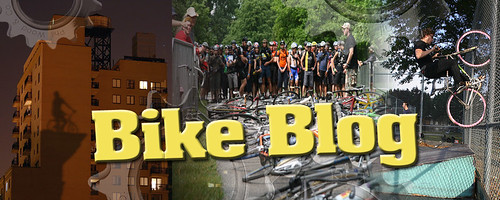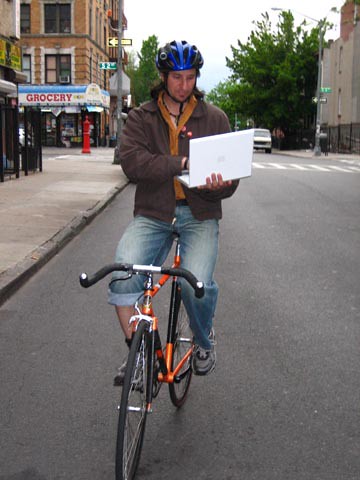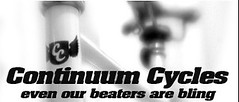Tompkins Square Riots, 20 years later, Concert

Speaking of documenting police misconduct, the mother of all "crack-downs" will be celebrating it's 20th year anniversary with a concert this Sunday, August 3rd.
For more info check here from FreeNYC.
Check out this article in the NYTimes by Colin Moynihan.
20 Years After Unrest, Class Tensions Have Faded and Punk Rock Will Be Played.
By COLIN MOYNIHAN
Published: August 2, 2008
The traditional gift for a 20th anniversary is something made of china. But this weekend, a moment from early August 1988 will be marked by bands with names like Team Spider, Leftöver Crack and Death Mold.
That moment, branded ever since as the Tompkins Square riot, began on a steamy Saturday night as a demonstration against a park curfew. But it quickly turned into a melee between protesters and police officers that lasted until dawn.
“It was one of the most exciting nights of my life,” said Jerry Wade, a squatter who helped lead the protests. Mr. Wade, known as Jerry the Peddler, is also organizing some of the commemorative events this weekend, which besides punk rock concerts include speeches and demonstrations scheduled to take place in or near the park, precisely the sort of events that irked some of the people living around it 20 years ago.
The confrontation over the 1 a.m. park curfew was fueled by concerns over issues including homelessness, gentrification and the future of the neighborhood. Squatters, artists, landlords, blue-collar families, merchants and young professionals all existed within blocks of the park. Tensions were heightened by the perception that newer and richer residents were displacing others with less money or political power.
To some East Village residents, the park had become a festering wound of drug use, homeless encampments and all-night music and parties. Responding to these complaints, the local community board voted to impose the curfew.
“They hung out in the park all night with drinking and music galore,” said Philip C. LaLumia, a community board member. “They called it music; we called it noise.”
On the night of Aug. 6, more than 100 people showed up at the park to protest the curfew, drinking beer, lighting firecrackers and carrying banners with slogans like “Gentrification is Class War.” Dozens of officers watched on foot and horseback, and around 12:30 a.m., some in the crowd began throwing bottles at the police.
From then until sunrise, officers battled with the crowd in and around the park, with the protesters hurling bottles and other debris, and the police using nightsticks and riot gear. Forty-four people were injured, 13 of them police officers.
A videographer, Clayton Patterson, captured police officers, some of whom removed or covered their badges and nameplates, severely beating protesters and passers-by. One onlooker was Robert Arihood, who said he was attacked several times by the police. For him, the looming anniversary and attending fanfare was stirring up uneasy memories of lying injured and motionless on Avenue A as officers taunted him. “I couldn’t move,” he said. “I thought I was going to die.”
Benjamin Ward, then the police commissioner, sharply criticized his force for losing control. Some commanders were reprimanded or forced into retirement; 14 officers were tried on brutality charges but none were convicted.
Twenty years later, the melee is both a cherished memory and a scar, with the protesters seen as either the romantic defenders of a losing cause or merely a collection of hooligans.
Most agree that the battle to keep the East Village affordable is now down to its last gasps. Studio apartments in the neighborhood now rent for about $2,000.
“The mythology that was created by the resistance of the neighborhood was marketed,” said Paul DeRienzo, a radio reporter who broadcast for WBAI from Avenue A in 1988 as sirens and screams sounded in the background. “By the early ’90s the East Village was considered a hip place to live.”
A local underground newspaper called The Shadow, which is sponsoring the concerts, is also assembling a special issue dedicated to stories of the conflict that will include an essay by Mr. Wade about how he helped coin a phrase that includes the words “our park” with a profane adjective separating them.
Another neighborhood paper, The Villager, published an essay by Bobby Steele, a musician who performed with the Misfits, criticizing another popular slogan of the day — Die, Yuppie scum — as hate speech.
That phrase and others have recently resurfaced on fliers wheat-pasted to lampposts and light poles. There are also fliers bearing an image of a winged bottle emblazoned with an anarchist symbol and the words “fly high” and “hit hard,” which became widespread in the years after the melee.
Slogans aside, a replay of 1988 seems unlikely. Organizers followed city rules and secured permits for the Saturday and Sunday concerts, which will both be over before nightfall.
These days the park’s curfew is one hour earlier, but it is rarely a source of controversy.
As midnight came and went on Thursday, residents quietly walked their dogs through the darkness, and a man and woman played Frisbee where the band shell, the park’s center of gravity, once stood. No police officers turned up to kick out the curfew-breakers.
A half-dozen people interviewed there said they knew nothing about the events of Aug. 6 and 7, 1988. But four people sitting on a bench beneath the spreading limbs of an elm tree said they had heard of the melee, even though three of them had not even been born. The group was quietly sipping from 22-ounce bottles of Guinness and discussing the previous weekend’s punk rock show in the park when mention of the curfew drew familiar objections.
“We want to enjoy our park,” said Angela Phillips, 19. “We want to be out here all night.”
-------------------------------
Not only was this a case of gentrification being implemented by the NYPD's raw end of the night stick, it is also one of the first major incidences in NYC history where rampant police misconduct was caught on video tape.
The major news networks, where most people formulate their opinions from, were all set to tell the story of wild junkies and crazed homeless people gone mad, were it not for the footage from people like Clayton Paterson and Paul Garrin
who risked physical assault to get their footage out to the press.
Their video evidence told a more complete tale of cops not only attacking demonstrators, but anyone they felt "undesirable" including innocent by-standers. All in the name of paving the way for the East Village to be made suitable for over-priced luxury condominiums. Ah, progress.
Just like if there were no footage of the police "body-checking" cyclists in Time's Square...most people would have no idea it even happened and Christopher Long would have a hard time explaining why he found the urge to attack a young innocent police officer.
Clayton Paterson's documentary, Captured will premiere at Webster Hall August 5th at 7pm. This film was too controversial, and not "New York enough" for the Tribeca Film Festival.











0 Comments:
Post a Comment
<< Home